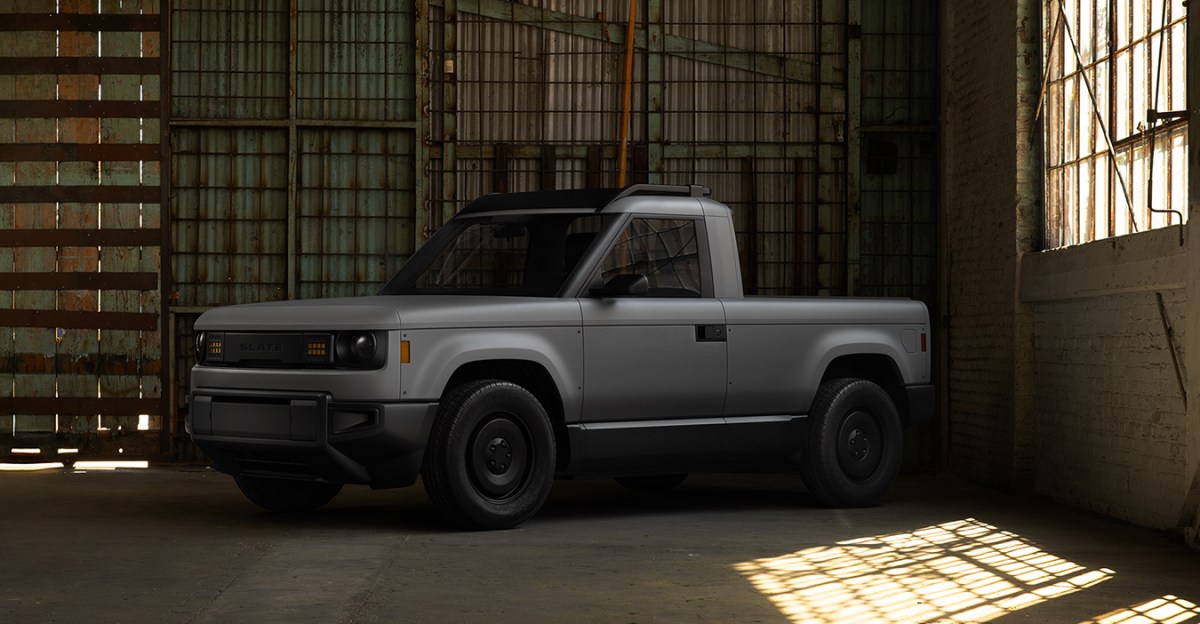The design is bad. The front trunk is a bad use of space, and the Japanese figured this out decades ago with the Kei truck. If you want to see real utility, look at this design.

The front trunk is a safety feature called a crumple zone and is objectively safer to be in a crash with.
Hm. Interesting point.
Maybe as we move our economy away from cars, and people dont all have to be drivers, we could also move away from cars that are poorly designed specifically around bad drivers.
Kei was recently found to botch all of their safety test scores for many years. As another commenter said, any crash in that design is guaranteed life threatening without some type of buffer.
If theres anything Ive learned from the fire departments insistence to have big wide roads so that they can shave off nano seconds to their response time, sometimes theres bigger things than persieved immediate safety to the individual.
For example, if we all drove Kei trucks slowly on small roads, a collision would not be as bad as driving a big safety focused truck at 80mph.
Still, your point is well taken. Maybe there are some ways to make safe small vehicles, including trucks, that arent explored yet.
You need infrastructure to actually support an alternative, otherwise cars are a necessity for many people to get to work and the grocery store.
Yeah, it would be nice to not need cars. I feel like this is a step towards function and away from vanity. Which is a good thing, even if it’s not the end goal.
That is true, except I’m talking about utility primarily. Garbage trucks already fulfill the design I’m mentioning and are used daily in most cities already.

People in garbage trucks don’t experience the same magnitude of force in a crash of equal speed, even without crumple zones, for a few reasons:
- Sheer mass of the garbage truck means that the same amount of momentum transfer results in less force to the humans inside. A garbage truck might weigh literally 20 times as much as a kei truck, which means that an abrupt collision will transfer 1/20 as much impulse to the passengers (as most of the force goes into changing the speed of the truck). Even collisions with still objects (trees, walls, poles) result in less force on the passengers, as a lot of the energy ends up deforming or disintegrating that stationary object as a crumple zone.
- Driver/passenger height in a garbage truck is generally above where the collision/deformation occurs. The passenger compartment isn’t under as much crushing force in a garbage truck crash compared to a kei truck at normal human height.
- The height of a garbage truck gives a lot more physical structure to dissipate the forces in a crash.
So the exact same shape/proportions of vehicle can be vastly different safety when large versus small.
Are you saying that because a heavy duty, highly specialized, utility vehicle, doesn’t have a crumple zone that the Slate truck is a bad design?
In my view the Slate truck is designed as a work vehicle. It’s for people who need to both hual things, and have a place to store tools. It’s trunk is perfect for that.
The Kei, and box trucks that we have in the US (which would have been a way better example for you to use.), are great for delivery vehicles. Jobs where you load things up and come back with an empty truck.
There’s a place for both form factors. The Slate is not a bad design, it just doesn’t fit what you think the use case for a small truck is.
Except that driver and passengers are above most crash situations. That is a cab over truck. The Japanese mini truck you referenced is a forward control. Different things , actually.
That’d be fine too. What’s your point?
European vans are probably the safest of utility cars, they don’t have a front trunk.
I did an image search for “European utility van” and everything I saw had a front engine compartment as a crumple zone. So I’m not sure what point you’re taking to make here.
Front trunks save lives in collisions though. I’d 100% rather be in a vehicle with a hood between me and another car, and I say this as an avid kei-truck fan.
Counterpoint: One of the first things people buy for a truck is a container for the bed for things they don’t want to be in the weather but also not in the cab.
A front-trunk eliminates this need which also frees up bed space.
Exactly, you can usually tell someone actually needs a truck if it’s got a stainless box behind the cab. Obviously there’s still people who cosplay as truck drivers that will have them too, but there are other signs you can use to tell them apart.
Americans won’t buy a Kei truck though. Granted, the frunk is a marketing concession, but it’s a fine one, if it can help push the market away from huge and expensive SUVs.
Or, more succinctly, don’t let perfect be the enemy of good.
Americans can’t buy them new because of the so-called Chicken Tax. We can only import them if they’re speed-governed, or at least 25 years old.
Even with those restrictions, lots of Americans want them, including me. There are quite a few importers bringing them over, including one that just started up in my area. They’re desirable enough that major media outlets are running articles about how people who need to get real work done covet kei trucks.
Yes, Americans would buy them. Americans are buying them.
It’s not the chicken tax itself, even if it plays a role. It’s that the chicken tax makes it not economically feasible to try to import light trucks, so they aren’t designed to U.S. emissions and safety regulations. And several U.S. regulations are, in my opinion, misguided, but that doesn’t really change the fact that an importer wouldn’t be able to comply with vehicles that weren’t engineered to those specifications.
Meanwhile, the cars and trucks engineered to American safety and emissions regulations face the perverse incentive to get bigger. This article describes some of the overall issues but contains this interesting nugget:
That’s a sensible recommendation. Except the 3,000-pound 2010 Ranger featured by IIHS has become the bigger and taller 2024 Ford Ranger, which weighs up to 5,325 pounds. Like so many US cars, the Ranger got supersized, a trend fed by a mix of consumer desires and government regulations that carved out gas efficiency loopholes for the trucks and SUVs that make up a swelling share of the US vehicle fleet.
In a sense, the trend of people wanting kei trucks paradoxically comes from the same reason why they’re not street legal: they didn’t get bigger because they weren’t subject to U.S. regulations pushing trucks to get bigger, but the noncompliance with those regulations makes them impossible to import and register (at least until they’re 25 years old).
Yep, the Chevrolet Bolt is the closest I could get to a Kei van.
Americans won’t be able to afford anything anyway pretty soon.
Forward control trucks, like that Kei truck are shit in so many respects, it would take a while to list. Source: I’ve owned one of it’s larger siblings and learned to hate them (being 187 cm tall didn’t help)
I have owned a Nissan vanette, And let me tell you, it’s a van-full of nope! Steering is super weird, as the wheels are under you, the feeling that your knees are going to be what crumples in a crash is unnerving, having the engine right next to you (it’s between the front seats) is smelly, warms up one of you thighs, but just one, even in the summer, and a slew of other shit. Standard layout for me, at least Eurovan layout.
Yea but we’re talking about electric vehicles now, no engine block.




